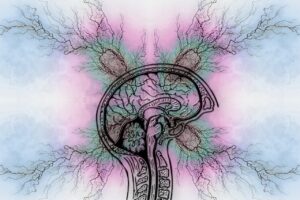Families of children with leukaemia may experience food insecurity
Nearly one in four American families of paediatric patients with acute lymphoblastic leukaemia (ALL) enrolled in a clinical trial experienced food insecurity, and almost half of the families eligible for the Supplemental Nutrition Assistance Program (SNAP) did not receive benefits, according to a new study.
In addition, receiving SNAP benefits was not sufficient to address food insecurity, according to results presented at the 15th AACR Conference on the Science of Cancer Health Disparities in Racial/Ethnic Minorities and the Medically Underserved.

“Food insecurity is connected to worse health outcomes in general paediatrics,” said Rahela Aziz-Bose, a paediatric oncology fellow at Boston Children’s Hospital and Dana-Farber Cancer Institute and lead author of the study. “It is incredibly important to understand whether patients who are being treated for cancer are experiencing food insecurity, because it is a risk factor on which we can intervene, and we can potentially improve outcomes.”
Receipt of SNAP benefits has been shown to reduce food insecurity in general paediatrics, representing a resource to mitigate adverse social determinants of health for children. Aziz-Bose and colleagues analysed the prevalence of low income and food insecurity among a group of patients with ALL, the most common childhood cancer, enrolled in the Dana-Farber Cancer Institute (DFCI)/ALL Consortium clinical trial at six US cancer centres from 2017 to 2022. An ancillary study within this paediatric oncology trial prospectively collected parent-reported information on income, SNAP receipt, and food insecurity.
“We looked at how well these six cancer centres are doing in connecting these families to nutrition supports that already exist, like SNAP,” said Aziz-Bose. “In addition, we wanted to understand whether receiving SNAP helps relieve food insecurity for these families.”
The researchers utilized parent-reported income at diagnosis and six months into therapy as a proxy to identify families that were SNAP-eligible. The authors applied statistical methods to study the association between SNAP eligibility, SNAP receipt, and parent-reported food insecurity.
The study revealed that 21 percent of 262 families evaluable at diagnosis and 25 percent of 223 families evaluable six months into therapy reported food insecurity. “The most important finding was that poverty and food insecurity are very common in this group of patients,” said Aziz-Bose.
At diagnosis, 20 percent of the families were SNAP-eligible. Of these, 60 percent reported food insecurity but only 53 percent were receiving SNAP benefits. A similar scenario was observed six months into therapy, when 28 percent of the families were SNAP-eligible, of whom 58 percent reported food insecurity and 58 percent were receiving SNAP.
“Nearly half of the eligible families were not receiving SNAP benefits, even though their children were being treated at highly resourced academic cancer centres,” said Aziz-Bose.
Among the 33 families that were SNAP-eligible at both time points, the fraction receiving SNAP benefits increased from 52 to 70 percent.
The study also showed that receiving SNAP benefits was not enough to address food insecurity, as more than half of the families receiving benefits were still experiencing food insecurity both at diagnosis and at six months into therapy (61 percent and 56 percent, respectively.
Photo by Syd Wachs















